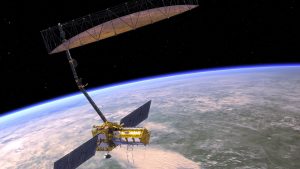NISAR:

NASA and ISRO are collaborating on developing a satellite called NISAR, which will detect movements of the planet’s surface as small as 0.4 inches over areas about half the size of a tennis court.
- NISAR is an SUV-sized satellite that is being jointly developed by the space agencies of the US and India.
- The name NISAR is short for NASA-ISRO-SAR. SAR here refers to the synthetic aperture radar that NASA will use to measure changes in the surface of the Earth.
- Essentially, SAR refers to a technique for producing high-resolution images.
- Because of the precision, the radar can penetrate clouds and darkness, which means that it can collect data day and night in any weather.
- The partnership agreement was signed between NASA and ISRO in 2014.
- NASA will provide one of the radars for the satellite, a high-rate communication subsystem for science data, GPS receivers, and a payload data subsystem.
- ISRO, on the other hand, will provide the spacecraft bus, the second type of radar (called the S-band radar), the launch vehicle, and associated launch services.
- The satellite will be launched in 2022 from the Satish Dhawan Space Center in Sriharikota, India, into a near-polar orbit.
- It will scan the globe every 12 days over the course of its three-year mission of imaging the Earth’s land, ice sheets, and sea ice to give an “unprecedented” view of the planet




